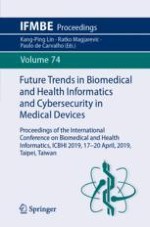2020 | OriginalPaper | Buchkapitel
Classification of Breast Cancer Malignancy Using Machine Learning Mechanisms in TensorFlow and Keras
verfasst von : Yuan-Hsiang Chang, Chi-Yu Chung
Erschienen in: Future Trends in Biomedical and Health Informatics and Cybersecurity in Medical Devices
Aktivieren Sie unsere intelligente Suche, um passende Fachinhalte oder Patente zu finden.
Wählen Sie Textabschnitte aus um mit Künstlicher Intelligenz passenden Patente zu finden. powered by
Markieren Sie Textabschnitte, um KI-gestützt weitere passende Inhalte zu finden. powered by
